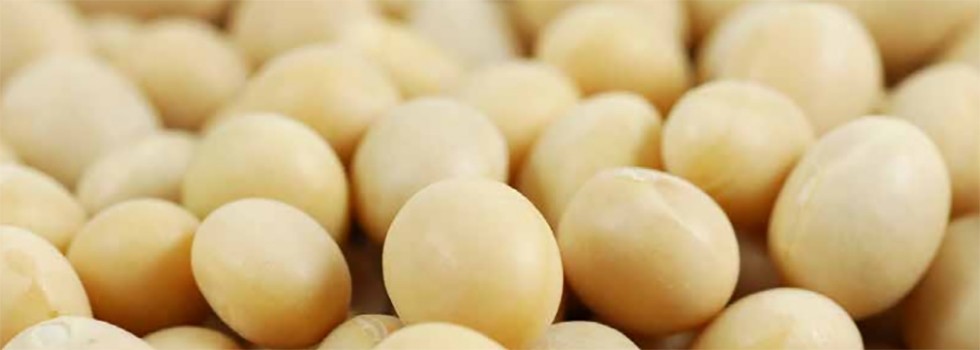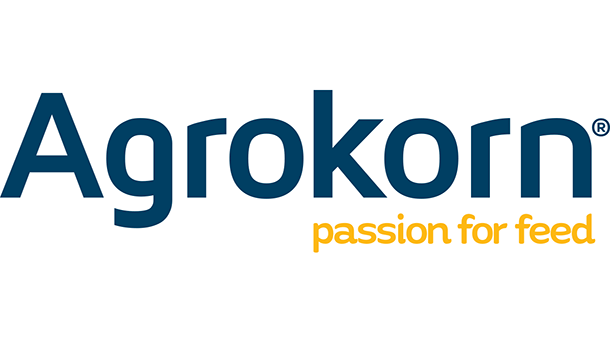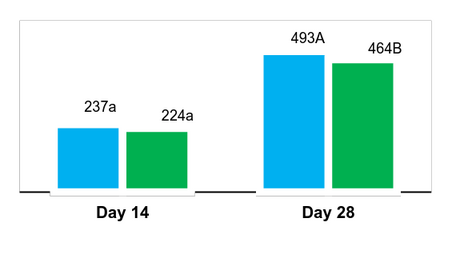Promotional Features
Anti-nutritional factors in soy proteins
Denmark-based Agro Korn works with the manufacturing of ingredients and feed for young animals, especially the use of soy. A closer look highlights that anti-nutritional factors (ANF) in soy are often blamed for poor performances in young animals. But the group of ANF compounds is very heterogeneous and young animals do not always respond as nutritionists expect as recent Agro Korn tests reveal.
Soybean has been considered as an excellent protein source for animals. However, trials show this often leads to higher frequency of diarrhea in young animals. Thus, greater use of antibiotics for treatment is needed when using ordinary soy sources, especially soybean meals. This is commonly explained by the presence of some ANFs in soybeans interfering with nutrient utilization in young animals, Especially in weanling piglets and day-old chicks, their immature digestive tracts and the stress at the weaning period makes them more sensitive to even intermediate ANF levels in processed soy products like soybean meal or soybean flour.
Consequently, the reduction of ANFs has been the ultimate target of many highly-processed soy products such as fermented soy proteins, enzyme-treated soy proteins, hydro-thermal treated soy proteins, soy protein concentrates and soy protein isolates. However, there seems to be no clear answer to whether it is necessary to remove ANFs from soy completely or if there is a safe level of ANFs that young animals can tolerate. ANF compounds are very heterogeneous and consist of various gut compromising compounds such as enzymeinhibitors (trypsin), antigens (lectins, glycinins) and oligosaccharides (Stachyose, Raffinose), Table 1.
References: Compiled data from literature and unpublished internal source.
On the other hand, the table demonstrates that the further refinement of common soybean and meal products reduces the ANF level significantly for all parameters. Large ranges are still seen within single ANFs. How do these ANFs affect digestion in the immature gut of young animals?
Trypsin inhibitors reduce protein digestibility
Protease inhibitor or trypsin inhibitor (TI) is one of the most abundant ANFs in soybeans. As the name suggests, TI inhibits the activity of enzymes that digest protein in the digestive tract such as trypsin, chymotrypsin and so on. TIA, however, can be destroyed by heat. From common soy products to refined soy proteins there is a clear drop in the TI activity (Table 1). Among refined soy protein products, fermented and enzyme treated soy proteins have the lowest TI activity, but this is mainly due to the additional heat treatment steps and not the fermentation or enzyme treatment itself. Indeed, using heat treatment to reduce TI is a double edged sword that requires handling with care. Severe heat treatment can eliminate TI completely but may destroy soy protein and consequently reduce protein utilization in animals at the same time.
Antigens and gut health
Glycinin and β-conglycinin are soy antigens that are immunogenic in young animals. Many studies claim soy antigens cause intestinal disturbances, reduce nutrient absorption and consequently decrease growth performance in piglets. Soy antigens are heat stable. Therefore, fermentation, enzyme treatment and extraction (by water and ethanol) are more effective at removing soy antigens compared to heat treatment. This explains why refined soy proteins mostly use one or combinations of these processing steps to lower the level of soy antigens (Table 1).
Oligosaccharides seen traditionally
Stachyose and raffinose are the main oligosaccharides in soy. The digestive enzymes of monograstric animals and humans cannot degrade the unique linkage, α-galactosidase, between sugars in molecules, which might cause poor energy digestibility and flatulence. This can be a challenge in young animals with undeveloped large intestines. Oligosaccharides in soy are also heat stable, and therefore can only be eliminated mostly by additional enzyme treatment, fermentation and extraction (Table 1).
For all of these ANFs it seems older animals can cope better with the common ANF-levels in standard soy products than very young animals with immature guts. For the moment, we lack regression analysis data to clearly distinguish between “good” and “bad” ANF levels for young, growing and adult animals. That is why Agro Korn in recent years has conducted a number of trials to document its products to farmers.
Understanding ANF and animal growth performance
In theory, the elimination of soy’s ANFs completely would improve nutrient utilization and therefore result in better growth performance in animals. However, it is not always the case. A new study with 3,600 piglets at Skjoldborg test station (SvineRådgivningen, Denmark, 2016) found that feeding special-treated soy protein (AlphaSoy 530) to weaned pigs improved average daily gain (ADG) by 8.7% in comparison with soy protein concentrate at day 28 (P < 0.05, Figure 2).
Figure 2. Daily weight gain of weaned piglets fed special-treated soy protein (AlphaSoy 530) vs. soy protein concentrate
Different superscript means significant different between treatments (P<0.05)This positive effect of special-treated soy protein on ADG also resulted in a higher average body weight by 0.55 kg per pig compared to soy protein concentrate at day 28 (P<0.05). The trend carried on to the later growing period. As the special-treated soy protein has a higher ANF level compared with soy protein concentrate, these results indicate that it is not necessary to remove ANFs from soy completely but to reduce them to a safe level.
For example, TI at below 3 TIU/mg in diets will not give any negative effect on young animals’ growth performance. Indeed, as mentioned above, the severe processing of soy may minimize ANF in soy but also modify soy grain matrix and especially the protein part that turns out to not benefit for the animals. Some studies reported that fermented soy protein has lower metabolizable energy value compared to soybean meal due the fermentation process by microbes that consumed starch, sugar and oligosaccharides — and even partly protein — of soybean meal as energy sources for their growth (Rojas and Stein (2014).
Moreover, some Australian studies suggested the “prebiotic” effect of oligosaccharides to support the gut health in young animals. Therefore, the elimination of soy oligosaccharides in some products will remove this extra effect. In this context, the special-treated soy protein seems to successfully bring the ANF down to a safe level — and even turn ANF into added-value — but still maintain the high quality of soy protein to gain positive effects on growth and gut health in young animals.
In general, the traditional thinking of ANF reduction in soy to promote growth performance and gut health in young animals may require a new approach. The right approach may not be to eliminate soy ANF completely, but to determine the safe level of ANF in soy products in relationship to growth performance and gut health in young animals and even turn ANF into the added-value feature of the processed soy products.
By Dr. Mai Anh Ton Nu and Dr. Aloys Laue, Nutritionists in Agro Korn, Denmark.



